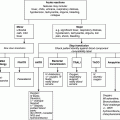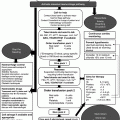Chapter 17 Jonathan Wallis1 and Stephen Wright2 1 Department of Haematology, Newcastle upon Tyne NHS Acute Hospitals Trust, Newcastle upon Tyne, UK 2 Department of Perioperative and Critical Care, Freeman Hospital, Newcastle upon Tyne, UK For clinicians working in intensive care unit (ICU), ‘what is an appropriate haemoglobin (Hb) concentration for this patient?’ is an important and daily question. This chapter will discuss the risks and benefits of anaemia and of transfusion, provide practical advice for those considering blood transfusion in the critically ill, summarize the results of the key transfusion studies and highlight the areas where evidence is lacking. In the UK, between 8% and 10% of the blood supply is used for patients on the ICU [1]. Some patients are admitted to ICU with anaemia but those who are not commonly develop anaemia during their ICU stay. The aetiology of the anaemia in ICU patients is usually multifactorial (Table 17.1), with ongoing haemorrhage being a relatively uncommon cause. For patients who have a long ICU stay, iatrogenic anaemia from multiple blood sampling can become significant; 40 mL of blood per day is average. Blood transfusion is often used to correct anaemia with around one-third of patients receiving one or more units of red blood cells (RBC) while in the ICU [2, 3]. Table 17.1 Common causes of anaemia in critical illness. Anaemia is also common on discharge from ICU – an inevitable consequence of the high prevalence of anaemia and restrictive transfusion practices in the critically ill. Some patients may recover their Hb concentration before hospital discharge, but in one study, one-third of ICU patients were discharged home with an Hb less than 100 g/L [4]. Little is known about the potential impact of this anaemia on functional recovery, but it is possible that some of the weakness and fatigue common in survivors of critical illness are related to anaemia persisting after discharge from intensive care. The primary role of red cells is oxygen delivery to tissues and removal of carbon dioxide. Secondary roles of less certain clinical importance include regulation of haemostasis and microvascular flow through physical flow effects, e.g. endothelial shear stress and forcing platelets to the periphery of small vessels, and through chemical mechanisms such as nitric oxide metabolism and secretion of ATP. Oxygen delivery to the tissues is mainly controlled by changes in regional and microvascular blood flow. Ischaemia is much more commonly due to hypoperfusion than due to anaemia. However, Hb concentration and oxygen saturation and the HbO2 dissociation curve are also important, more especially in tissues with higher oxygen demand relative to blood flow. Different tissues extract varying proportions of the oxygen supplied, with (in healthy resting subjects) the skin and kidney’s extracting less than 10%, the brain about 30% and the heart nearly 60% of delivered oxygen, leaving the heart particularly susceptible to the effects of anaemia. The aim of blood transfusion in the critically ill is largely to maintain adequate oxygen delivery to the tissues and in particular the myocardium. The efficacy of blood transfusion in reversing the effects of anaemia depends in part on the ability of the transfused cells to bind and release oxygen. During storage, the red cells lose 2,3-DPG with a consequent left shift in the HbO2 dissociation curve and a lower ability to release oxygen at any given partial pressure of oxygen. This largely recovers by 6 h after transfusion but takes 24 h for full recovery. During storage, the red cells undergo other biochemical, metabolic and structural changes, some of which may never completely recover.
Appropriate Haemoglobin in Intensive Care
Introduction
Background
Blood loss
Trauma/surgery
Occult GI blood loss (e.g. gastric erosions and stress ulceration)
Iatrogenic
Blood tests
Discarded blood from indwelling venous/arterial catheters
Clotting of extracorporeal circuits such as continuous haemofiltration
Haemodilution from intravenous fluid resuscitation
Sepsis and inflammation
Reduced erythropoiesis
Impaired iron utilization
Blunted response to erythropoietin
Reduced red cell survival
Nutritional deficiency
Protein calorie malnutrition/negative nitrogen balance
Reduced intake of haematinics and micronutrients
Renal impairment
Reduced erythropoietin synthesis
Role of red cells and of transfusion
Risks of anaemia and of transfusion
Stay updated, free articles. Join our Telegram channel

Full access? Get Clinical Tree






